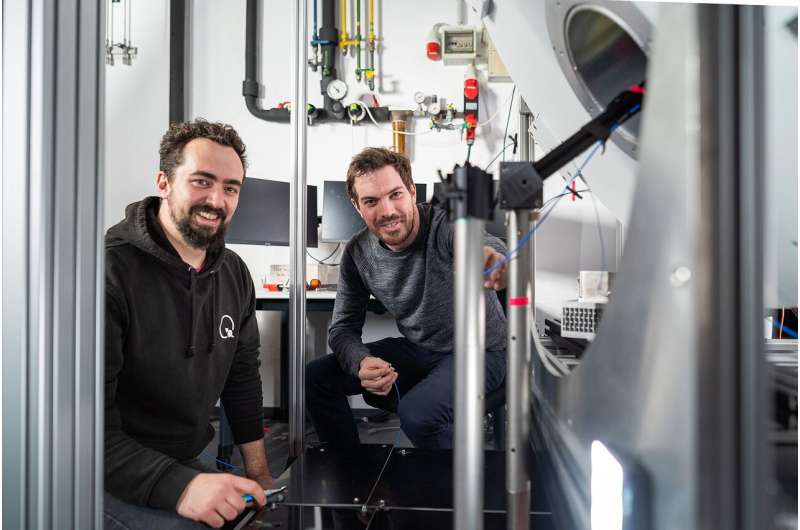Researchers at the Technical University of Munich (TUM) have invented an entirely new field of microscopy called nuclear spin microscopy. The team can visualize magnetic signals of nuclear magnetic resonance with a microscope. Quantum sensors convert the signals into light, enabling extremely high-resolution optical imaging.
Magnetic resonance imaging (MRI) scanners are known for their ability to look deep into the human body and create images of organs and tissues. The new method, published in the journal Nature Communications, extends this technique to the realm of microscopic detail.
“The quantum sensors used make it possible to convert magnetic resonance signals into optical signals. These signals are captured by a camera and displayed as images,” explains Dominik Bucher, Professor of Quantum Sensing and researcher at the Cluster of Excellence Munich Center for Quantum Science and Technology (MCQST).
Diamond chip acts as a quantum sensor
The resolution of the new MRI microscope reaches ten-millionths of a meter—that is so fine that even the structures of individual cells can be made visible in the future. At the heart of the new microscope is a tiny diamond chip.
This diamond, specially prepared at the atomic level, serves as a highly sensitive quantum sensor for MRI magnetic fields. When irradiated with laser light, it generates a fluorescent signal containing the MRI signal’s information. This signal is recorded with a high-speed camera and enables images with a significantly higher resolution down to the microscopic level.

A wide range of practical applications are possible
The potential applications of magnetic resonance microscopy are up-and-coming: In cancer research, individual cells could be examined in detail to gain new insights into tumor growth and spread.
In pharmaceutical research, the technology could be used to efficiently test and optimize active ingredients at a molecular level. It also offers excellent potential in materials science, such as analyzing the chemical composition of thin-film materials or catalysts.
The team has applied for a patent for its development and is already planning to develop the technology further to make it even faster and more precise. In the long term, it could become a standard tool in medical diagnostics and research. “The fusion of quantum physics and imaging opens up completely new possibilities for understanding the world at the molecular level,” says first author Karl D. Briegel.
More information:
Karl D. Briegel et al, Optical widefield nuclear magnetic resonance microscopy, Nature Communications (2025). DOI: 10.1038/s41467-024-55003-5
Citation:
A completely new type of microscopy based on quantum sensors (2025, February 25)
retrieved 25 February 2025
from
This document is subject to copyright. Apart from any fair dealing for the purpose of private study or research, no
part may be reproduced without the written permission. The content is provided for information purposes only.

